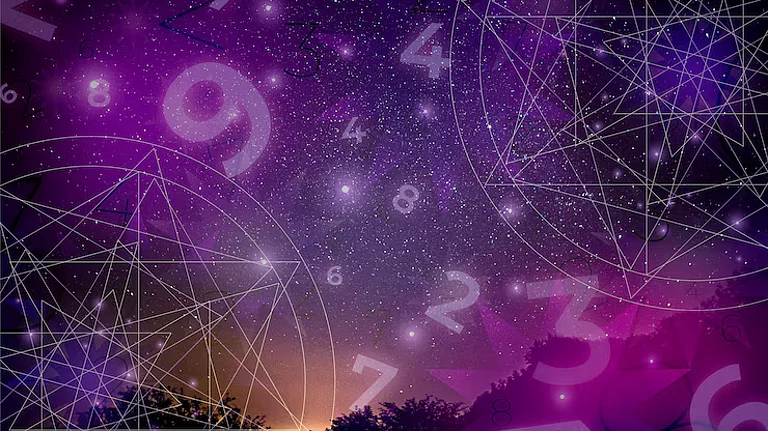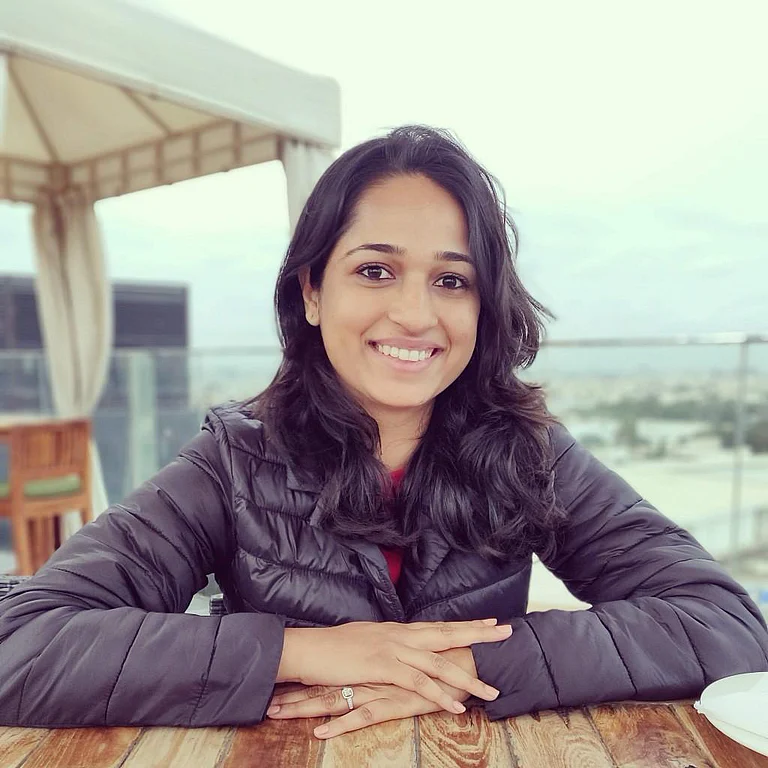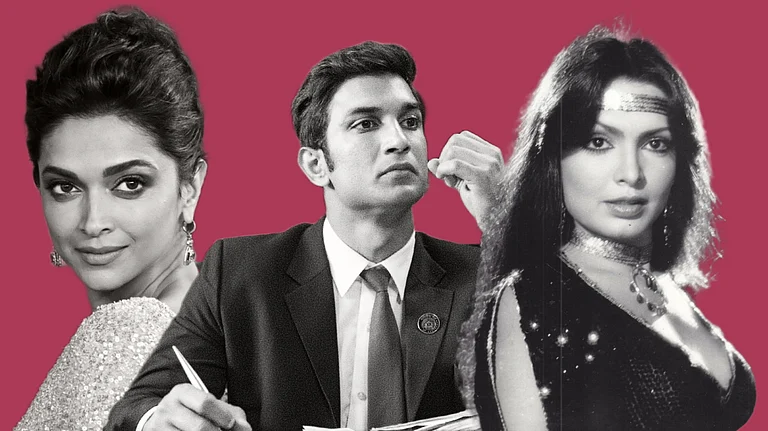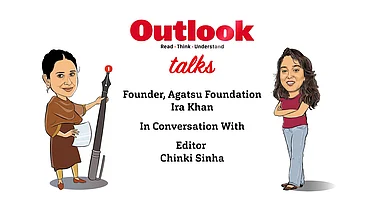
A mental health professional shares her personal reflections on caregiving and human connection.
She talks about stereotypes regarding mental illness among marginal communities.
She says, "the role of existing therapeutics in addressing some of the critical precipitating and perpetuating factors isn’t exactly perspicacious."
Kali had tattoos all over her body, even around her piercing eyes. Calm in her stupor and labelled catatonic, she hardly spoke. It was 1995. My colleague Vaishnavi Jayakumar and I were 24.
Kali must have been in her 40s, though she looked much older. It seemed like she had starved for many days, months even; finding the most obscure, yet ingenious ways to get something into her body, to survive. She belonged to no land and to no one.
But then, stereotypes do kick in, and with that, the idea of one’s home, family, and social systems that helps one etch out an identity and build a social world. I figured from her social markers that she was part of a northern tribal community and had perhaps wandered away from home, in the absence of access to mental healthcare and in the background of immense disadvantage. Connections were lost, and that’s somewhat unusual amongst Adivasis.
We didn’t know her backstory, you see, and no one accompanied her to the clinic to share her story; neither could she. And yet, she held on to her selfhood, refused medicines, but did accept and even grow to enjoy our chats—when I spoke, her silent eyes first turned away, but then gradually made contact with mine, acknowledging and validating my offer of friendship.
All I did was sit with her and cajole her to eat, and meet her where she wanted to be met; no jargon, no technique, plain common sense—wisdom drawn from suffering and emanating from a shared feeling of alienation, perhaps? She grew weaker, and in her frailty, surrendered her faith and hope. We carried her to the hospital. And cared for her until she died. We were novices then and it tore us apart as it still does now.
It’s 2025. And we have cremated and buried over 600 people. Death happens. As does life. Both have consequences. And both can be devastating or freeing—for people and their loved ones. I often wonder what could have been had she lived longer. Would we have met her loved ones? Shared a cup of chai over an intimate chat?
Through three decades, many ethical dilemmas have snuck in; in the mundane everyday operations and in the development of nurturing care ecologies for women—and later men—at the intersection of homelessness, disadvantage and mental illness. Not all decisions were studied, non linear, and not all stories ended well.
How best to respond to unique and complex mental health needs—particularly of the underserved, where stress is exacerbated by positionalities, deprivation and diminishing social capital—remains only partially answered. Further, the role of existing therapeutics in addressing some of the critical precipitating and perpetuating factors isn’t exactly perspicacious.
Vani explained this to me better that most. ‘I need help, but I don’t want to put in any effort. I’m not taking medicines properly and I think I’m going mad slowly. I need medical care, and I need some rest… but I also need to be loved and held. I have a crush on Sunder. He’s funny and I’m desperate for a reason to live.’ Her deep eyes would glance into my soul as she spoke her truth very simply and eloquently, leaving behind simultaneously, a thousand lessons and many unanswered questions.
Vani loved hard. Sadly, the world was too small to accommodate her brave and unconventional ways of thinking, loving and being. Her tumultuous life saw her through many heavy moments of unbearable suffering. She was capable of a sincere and deep love that enveloped all that she cared for, especially her parents, her many dogs, and some of her lovers. While her love was sometimes overwhelming, it was always special.
Equally, her quiet and steady form of resistance against an unfree—and often unfair—world was bound by social diktats that shackled thought and free expression. She wasn’t one to be censored by fear of the unknown. ‘Open your mind,’ she would often tell me. ‘How can I be punished for feeling intensely and deeply?’ She was one of the finest philosophers that I have met.
She taught me that every thought mattered, however incredulous one found it to be. She centred morals in care, and yet juxtaposed it so finely with individual freedoms and distinct and diverse ways of thinking. She walked us through the delicate balance between free will, safety and fluidity of care—sometimes frustrated, sometimes angry, many times tired and hopeless, but always insightful.
She questioned the role of work in recovery, as much as she longed to be engaged in something meaningful. She questioned the role of boundaries and power in therapeutic relationships, as I often do, moral code of ethics notwithstanding. In a sense, we were similar… the canine babies in our lives, our exploration of faith, our ruminations over life, responsibility, justice and love, our obsession with unorthodoxy and straight talk, and our revulsion for most things, banal. She believed in the use of contemplative discussions as a tool to heal, as do I. Nothing like stories and dialogue.
‘Meladdathai Yeppadi Sandipadhu’, she asked; which, when translated, would mean how one accessed their higher self, amongst other things. She distinguished between knowledge and voice, and explored the role of power and control in mental healthcare formulations.
I love writer June McDaniel’s work that attempts to understand and distinguish divine madness from ordinary madness, as she dives deep into the various states of passion, desire, chaos, detachment and even frenzy. Vani reminds me of both McDaniel and a mad saint from the Bhakti movement whose sensibilities and exquisite language of care will never be forgotten. Meanwhile, McDaniel’s book on The Madness of the Saints begins with an untitled Baul song, sung by Boidyanath Sarma (Calcutta, 1984).
Bhagavan (God) is mad, he has created all sorts of confusion
He has made the Country mad
Such a madman as this, I have not found
O crazy mind
I haven’t found the madman I desire
I haven’t found any such madman
Thus, I have not become mad.
And while the Bhakti movement exalted the madness of the saints in the 12th century, the initial responses—that addressed mental distress located in the scientific realm over 200 years ago—were problematic. The birth of the asylum, used as a tool to segregate the ‘sane’ from the ‘insane’, swivel chairs and lobotomies, pathologising gender preferences, instigating female discontent through social representations of mental illness in what were largely considered female-centered ailments such as hysteria, etc.—it’s a chequered history. To sift through what matters, and intricately explore dimensions through dialogue, collective attention and exploration were unfortunately replaced with ideological rigidness and intellectual reductionism, restricting the discourse to binaries.
We learnt that both institutions and society could be scary places for those that we choose to oppress or marginalise. After all, one draws from the other and there are elements of each in the other. Beeni’s sister’s experience of psychosis—that ended in her tragic and violent death by stoning for behaviour that people considered irrational and unreasonable—highlights the risk of black-and-white thinking. I can’t forget Tara’s brother or the permanent chain tied to the leg of his dining table, used to restrain her supposed unreasonableness. ‘She simply cannot conform, and is too much,’ he said. Tara took seven years to release these feeble connections. Knowing no other way of experiencing belongingness, even in the face of rejection, humiliation and shame.
Homeless women who seek us, or whom we reach, show their scars of fear and neglect in the soot layered on their bodies, blending into the landscape, or in wounds suffered from climbing trees to keep themselves safe through the night. I recall mild-mannered, resilient, kind and beautiful Vimala, counting numbers but stopping at 13 or 14. That’s the number of men that abused her... She would wake up at the crack of dawn to shower multiple times, wanting to rid her body of grime and all traces of a disordered society.
So then, the natural question that comes to one’s mind is this: How does one accompany someone through this suffering in a manner that is supportive for the mind, to seek some semblance of calm and peace? How does one embrace that uncertainty and ambiguity and yet show up, time and again, persevere, collaborate with experts by experience and think within and out of the box with a sense of intentionality that is visceral.
We listen. Listen to the voices of those who speak the language of madness, of distress, of love, of loneliness and grief. And in these voices of reason are insights of how care might be conceptualised.
“A healing space is where I feel heard
where you understand why the pain, instead of ask why this behaviour
it’s a space to express your inner thoughts freely
It’s a dog and a cup of coffee, that’s a healing space
it’s to be able to watch TV and read my favourite book
it’s part love, part food, part care, part entertainment, and friendship
It is where you can work”
(as shared by residents of The Banyan)
As I think of freedom and mental health, I hope all forms of stifling are challenged, and unjust barriers are broken. I wish mental health is demystified, and many engage freely in conversations and contribute towards the advancement of mental health sciences. I wish that diversity might be embraced and individual or institutional disagreements forgotten. I wish, most of all, that hope is spurred and that no one is ‘too much’. Like Bama said, ‘I’m happy because I’m alive,’ hooked on to an oxygen concentrator, smiling and chatty even in her last days. From hosting the finest parties in the city in her luxurious parental home, her rapid descent into poverty, living unhomed, alone, and with a severe mental illness, following the death of her parents; she submitted herself to life! ‘Acceptance, optimism, grit and patience… train people in these skills… they will be able to survive anywhere then, even if all support networks collapse!’
Meanwhile, Sam gave me three pieces of advice: ‘If anyone makes you sad, stop contact. But if failures make you sad, give it time. Most importantly, if you are restless, keep quiet. Don’t act.’ Living with schizophrenia, she said that she spoke back to her voices and could stop them when she wanted. Unlike Bama who evangelised the benefits of anti-psychotics, Sam decided to live with her voices, since they brought her closer to her ideal life. ‘Ooh, life on the streets was terrible. I was very depressed but somehow God guided me.’ She attributes her ‘recovery’ and wellbeing to a job, ‘being amicable with everyone and looking after herself.’ Parallel journeys and perspectives…
When I was 13, I wrote a letter to the Gods and thought it would reach them, asking why our neighbours buried gentle, harmless puppies alive. Was it self-preservation, broken connections, rationalisation of the absurd and a sense of separateness that runs so deep that it is perhaps now a function of our humanness? While my letter went unanswered, I met the most fascinating people who taught me much of what I do today and made me who I am, saving me from the disaster of a shallow life, from meaninglessness and perhaps even from self-annihilation. Contrary to the belief that I am the carer, I’m cared for by my purpose, by the love I find in my relationships and by being held and celebrated.
Maybe the letter was read, after all.
As of July end: Emergency Care and Recovery Centre-5051 has accessed services across The Banyan direct and partner sites. There are 611 beds across direct and partner sites.
Home Again: 1328 have accessed services. Currently, 645 live across 135 homes run by The Banyan and its partners
NALAM: Community Mental Health—12,128 people have accessed outpatient services. Additionally, 2,981 people have been offered non-clinical community-based mental health services. In a month, outpatient clinics across The Banyan and its partners see about 1,800 service users and their families.
Mogappair facility has 95 beds and are usually at full occupancy.
MORE FROM THIS ISSUE
(With inputs from Archana Padmakar and Keerthana R)
(Views expressed are personal)
In its August 21 issue, 'Every Day I Pray For Love,' Outlook collaborated with The Banyan India to take a hard look at the community and care provided to those with mental health disorders in India. From the inmates in mental health facilities across India—Ranchi to Lucknow—to the mental health impact of conflict journalism, to the chronic stress caused by the caste system, our reporters and columnists shed light on and questioned the stigma weighing down the vulnerable communities where mental health disorders are prevalent. This copy appeared in print as 'In The Loving Memory Of Kali'.







.png?auto=format%2Ccompress&fit=max&format=webp&w=768&dpr=1.0)






















